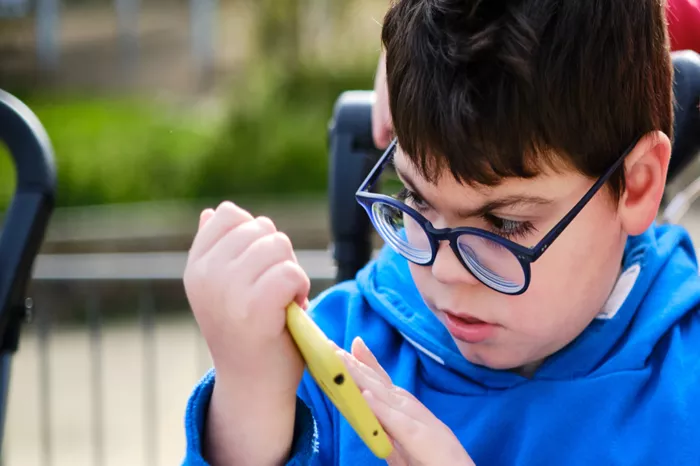With increased screen time and worsening air pollution, children’s eye health faces greater risks than ever. Experts warn that blue light from digital devices and environmental pollutants are two critical factors impacting young eyes, urging parents to be vigilant.
Blue Light’s Impact on Children’s Eyes
Children are spending more time on screens—both for education and entertainment. Digital screens emit blue light, a high-energy visible light also found in sunlight. While blue light helps regulate our sleep-wake cycle, prolonged exposure from screens can be harmful, especially to children.
“Children are particularly vulnerable to blue light because their retinas are thinner than those of adults,” explains Dr. Neeraj Sanduja, an ophthalmologist and eye surgeon at Viaan Eye and Retina Centre. This thin retinal layer increases the likelihood of damage from excessive screen time.
Studies show that blue light exposure can lead to digital eye strain, characterized by symptoms like blurry vision, dry eyes, headaches, and trouble focusing—symptoms children may not recognize or report. “This unawareness can affect their academic performance and overall well-being,” says Dr. Sanduja. Additionally, prolonged exposure over a lifetime could elevate the risk of macular degeneration, potentially leading to vision loss in older age.
Air Pollution’s Impact on Eye Health
Beyond blue light, air pollution poses another significant threat to children’s eye health. Pollutants such as particulate matter (PM), nitrogen dioxide (NO2), and ozone (O3) can irritate the eyes and aggravate conditions like allergic conjunctivitis, which results in inflammation and discomfort.
“Children breathe more rapidly and have developing bodies, which increases their exposure to these pollutants,” Dr. Sanduja notes. “This heightened exposure can lead to allergic reactions and eye irritation.”
Chronic exposure to air pollution may also be contributing to myopia, or nearsightedness, a condition that affects children’s ability to see distant objects clearly and can worsen if left unaddressed.
The Dual Threat: Blue Light and Air Pollution
Children in urban areas often face a combined risk: excessive screen time and higher exposure to air pollution. Parents trying to protect their children from outdoor air pollution may inadvertently increase their screen exposure indoors. “This creates a vicious cycle,” says Dr. Sanduja. “Keeping children indoors to avoid pollution leads to more screen time, increasing blue light exposure and eye strain.”
Strategies to Protect Children’s Eye Health
To combat these threats, Dr. Sanduja shares several practical strategies for parents and caregivers:
Limit Screen Time: Setting clear screen time boundaries is crucial. The American Academy of Pediatrics advises no more than one hour per day for children aged 2 to 5, while older children should take regular breaks and adhere to time limits.
Use Blue Light Filters: Many devices have a blue light filter that can be activated, particularly useful in the evening to reduce exposure before bedtime. Blue light-blocking glasses offer additional protection.
Follow the 20-20-20 Rule: Dr. Sanduja recommends this simple practice: “Every 20 minutes, take a 20-second break and look at something 20 feet away.” This helps alleviate eye strain and fatigue.
Encourage Outdoor Play: Spending time outdoors is linked to lower risks of myopia. “Activities in green spaces offer dual benefits for physical health and reducing myopia risk,” Dr. Sanduja says.
Monitor Air Quality: Parents should stay updated on local air quality levels. On high-pollution days, limiting outdoor activities and using indoor air purifiers can reduce pollutant exposure.
Regular Eye Check-ups: Routine eye exams are vital for early detection of eye issues. “Addressing eye health concerns early can prevent long-term damage,” Dr. Sanduja advises, stressing that eye care practitioners can offer tailored guidance on blue light and pollution protection.
Conclusion
As screen usage and pollution levels rise, children’s eye health remains vulnerable. Taking preventive measures can make a significant difference in protecting young eyes against blue light and pollution, setting a foundation for healthier vision in the future.
Related topic:
5 Effective Home Remedies for Under Eye Twitching
How Do You Get Rid Of Chicken Skin Under Your Eyes?
How Long Does Eye Swelling Last After Cataract Surgery?


